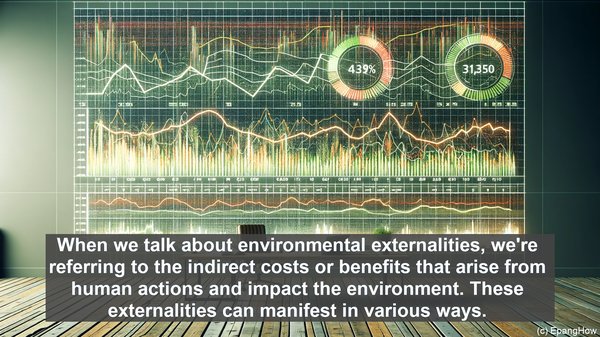Introduction: The Significance of Externalities
Hello everyone! In today’s article, we’ll be exploring the realm of externalities, specifically focusing on the distinction between environmental and social externalities. Externalities, in essence, are the unintended consequences of an economic activity that affect parties not directly involved in that activity. While both environmental and social externalities fall under this broad umbrella, they differ in terms of their nature, scope, and impact. Let’s dive in!

Environmental Externalities: The Ecological Ripple Effect
When we talk about environmental externalities, we’re referring to the indirect costs or benefits that arise from human actions and impact the environment. These externalities can manifest in various ways. For instance, consider a factory that emits pollutants into the air. The immediate cost of this pollution may be borne by the factory itself, but the long-term consequences, such as air pollution-related health issues or climate change, affect society as a whole. Similarly, deforestation for agricultural purposes may benefit a few farmers in the short term, but it can lead to soil erosion, loss of biodiversity, and even altered rainfall patterns, which have far-reaching implications. Environmental externalities, therefore, have a wide scope, often extending beyond geographical and temporal boundaries.

Social Externalities: The Human Connection
In contrast to environmental externalities, social externalities primarily revolve around the impact of economic activities on individuals and communities. These externalities can be both positive and negative. Let’s consider an example. Imagine a company setting up a manufacturing plant in a small town. This plant provides employment opportunities, boosting the local economy. This positive externality, in the form of job creation, directly benefits the community. On the other hand, the plant’s operations might also lead to increased traffic congestion, noise pollution, and reduced air quality, negatively impacting the quality of life for the residents. Social externalities, therefore, are often more localized and immediate in their effects, directly influencing the well-being of individuals and communities.
Interplay and Overlaps: The Complexities
While we’ve highlighted the distinctions between environmental and social externalities, it’s important to note that these categories are not mutually exclusive. In fact, there can be significant overlaps and interdependencies. For instance, an environmental externality, such as water pollution, can have direct social implications, leading to health issues or reduced access to clean water. Similarly, a social externality, such as income inequality, can have environmental consequences, as marginalized communities may lack resources to adapt to or mitigate the effects of climate change. Recognizing and understanding these interconnections is crucial for devising holistic solutions and policies.
